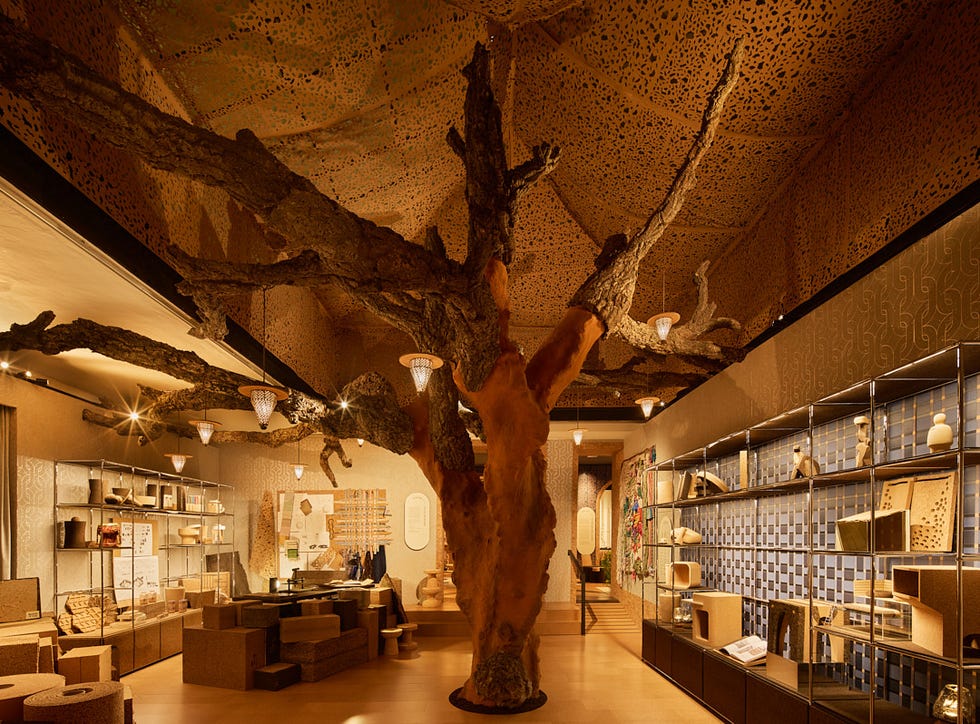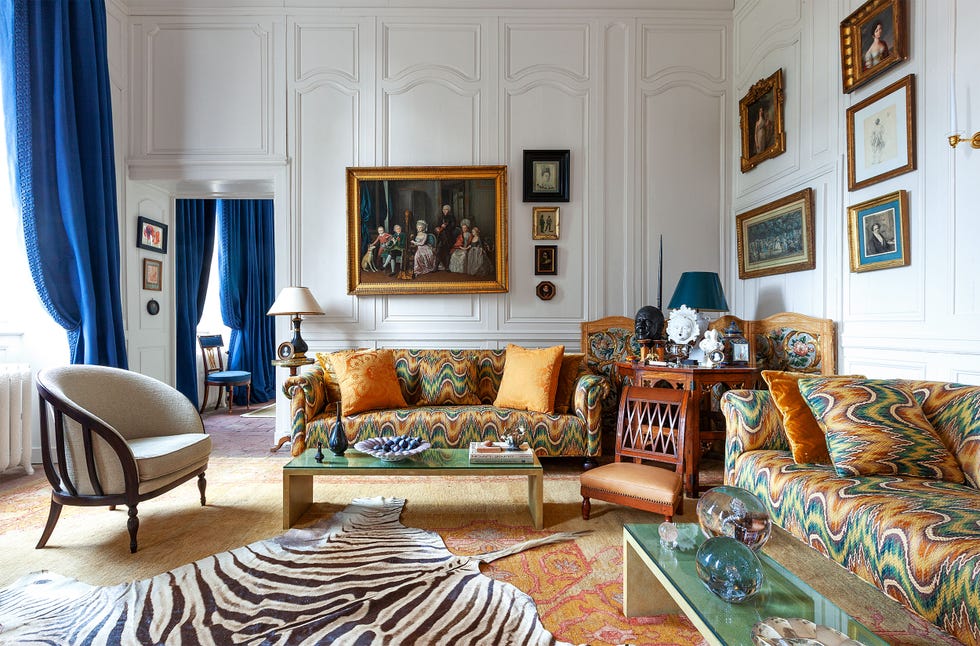When the earliest form of plastic, bakelite, was introduced to the public in 1907 it was marketed as “the material of a thousand uses.” Entirely synthetic, it was initially intended as a replacement for natural shellac (until then the primary electric insulator among inventors and engineers). Over 100 years later plastic has indeed become the material of a thousand uses, so all consuming that we find it even in our bodies. Though the design world has gradually moved away from mass produced plastic following the boom of 1980s postmodern designers that privileged it–for instance, Gaetano Pesce’s famous, flappy vases are all polyurethane resin, a form of plastic–most materials that are used in the objects we live with today have adverse effects on the Earth, and by extension all living things on it.
When we start to find plastics not just in our oceans but in our bloodstreams, we have to agree enough is enough. American architect David Rockwell has certainly had enough, but rather than just eschewing harmful materials in his practice he is suggesting alternatives. Thanks to Rockwell’s new project, Cork Collective, this wonder material, with nearly as many uses as plastic and none of its adverse effects, is rising in the design world’s wider consciousness. “We’ve been interested in cork for a long time,” Rockwell says. “We previously developed a cork wallcovering collection called Porto with Maya Romanoff, years before the Cork Collective was even a spark of an idea. It was inspired by our obsession with cork and its incredible range of aesthetic properties and applicability in the built environment.”
Cork Collective began to take form a few years ago as a large-scale recycling and repurposing project. “In thinking about ways in which we could be better sustainability stewards, we were shocked when we learned that 13 billion cork stoppers worldwide are thrown in trash,” Rockwell says, with only 1% of what’s used being recycled each year. “With our deep roots in the hospitality industry, I felt called to try to galvanize our community around an educational and recycling campaign that would open people’s eyes to cork’s incredible transformative properties and potential. It can be recycled over and over again.” To this end, Rockwell and his team began reaching out to businesses in New York for their launch program there and now have over 50 hospitality partners. Cork is gathered from these hotels and restaurants (Nobu, Melba’s, and the team behind COTE Korean Steakhouse, for instance) and repurposed locally for the common good. For instance, by replacing rubber playground coverings in New York city with recycled cork–which lasts longer and serves the exact same purpose.
But the movement won’t stop at New York. Cork Collective is rolling out a global expansion plan this year with their founding partners Southern Glazer’s Wine and Spirits, BlueWell, and Amorim, the 155-year-old company that is the world’s largest cork producer. Why so much attention on just one material? Because cork is singular in its possibilities and qualities. It’s a magical, natural material unlike any other, absorbing more carbon than it emits. “Studies have shown that a single natural cork stopper has a balance of up to 309 grams of CO2,” Rockwell says, “Numbers for sparkling wine stoppers go even higher at up to 589 grams. It’s a net negative carbon footprint. In fact, harvested cork trees absorb 3 to 5 times more CO2 than non-harvested trees. Cork trees in Portugal alone help offset 10 million tons of carbon every year. So harvesting the bark helps more with CO2 emissions than if you leave the trees alone.”
For Rockwell it isn’t enough to just reuse the material, the end product needs to be genuinely attractive. “We see cork as a sustainable, flexible product that is an exciting and versatile material for a wide range of hospitality environments.” To prove it, Rockwell and his team have staged “Casa Cork,” a weeklong installation during Milan Design Week that gives people a chance to see with their own eyes the vast aesthetic and functional possibilities of the material.
The space is stunning, with a cork lined entrance featuring circular, cork sconces that lead into a high ceilinged atrium–a reconstructed cork tree in its center. Up a few stairs are several seating areas, salon, and bar utilizing cork wallpaper, cork flooring, cork picture frames, seats, tables, lights and even cork upholstery!
The space is refined and atmospheric; distinctly contemporary, but informed by whimsical rooms of the past. “We looked at the Chalet of the Countess of Edla, an eclectic 19th-century Alpine-style chalet in Sintra, Portugal,” Rockwell says. “We were inspired by its extensive use of cork as an ornamental element and its sense of craftsmanship and materiality. The exterior windows, balconies, and handrails are adorned with cork. It set the tone for the procession of spaces, from the gallery to the atelier to the salon. Since we are in a residential neighborhood in Milan, we wanted to create a space that fits with the experience of stepping through the wooden door into another world.”
In the atelier, twelve student projects from Parsons and Politecnico are presented incorporating cork. One student’s table lamps uses cork as a base around which hand blown glass shades take form. Another design models for cork pool floats.
Casa Cork alone has presented enough iterations that any designer or architect has no excuse not to reconsider the material.
If you look closely you start to see that cork has already popped up in more places than you might expect, and going as far back as Marcel Proust’s day, when his bedroom was cork-lined. See it now in a Charlap Hyman and Herrero-designed Miami apartment featured in Elle Decor.
Thanks to Rockwell Group, any ecologically concerned, curious mind now has innumerable jumping off points for thinking about how the material might work for them. If you’re lucky enough to be in Milan this week you can visit the installation at 31 Via Solferino: On April 9th between 11:00 am and 4:00 pm, the 10th between 10:00 am and 7:00 pm, and the 11th and 12th between 10:00 am to 5:00 pm.
If you miss it, don’t worry! It was designed modularly with the hopes that it will travel to different cities. “We are currently exploring future locations now,” Rockwell says. All we need to do is stay tuned.








